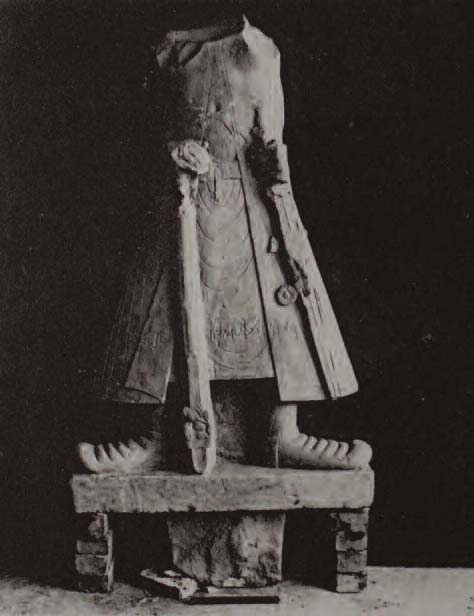5
Kanishka and the White Hare of Peshawar
The famous silk route which connected China with the Middle East and Europe had some important variants one of which ran through the Hindu Kush to Afghanistan. Another very important route ran right over the Karkoram Pass at 18,500 ft, through Ladakh, then crossed the Himalaya and ran on down to Kashmir and Northern India. A very thin thread along which ideas and artistic traditions flowed in both directions, east and west, including Buddhism and the Three Hares symbol.
Two thousand years ago this whole area was part of the vast Kushana Empire. The emperor Kanishka (who ruled 127–140AD) held sway from the borders of Persia right up to the city states on the edge of the Takla Makan desert, even as far as Dunhuang. Takla makan means ‘place of ruins’, or the ‘abandoned place’. A vast desert around which the Silk Route ran both north and south. Kanishka also controlled much of Northern India. He had capitals at Begram, north of Kabul, in Peshawar at the other end of the Khyber pass and at Mathura, an ancient city between Delhi and Agra. The Kushans adopted the Hellenistic culture of Bactria and with it the Greek alphabet to suit their language. The Kushans, originally from Central Asia were called the Yuezhi from Xinjiang and Gansu. They looked both east and west for inspiration and in so doing created one of the world’s truly great and original artistic cultures. They incorporated artistic skills from both India and Greece, ideas of form and beauty that were fused at the hip. This movement culminated in the school of Gandhara, which left us some breathtakingly beautiful Buddhist statues. Gandhara is near present day Peshawar, which was then called Puruṣapura, which in Sanskrit meant ‘city of men’.
These elegant artistic styles persisted for many centuries and many Gandharan statues can be seen in museums around the world.

Statue of the Kushan Emperor Kanishka 2nd century AD, Mathura, Uttar Pradesh, North India
The story of Kanishka’s white hare is interesting because it involves his conversion to Buddhism. Apparently Kanishka was out hunting and chasing a white hare when it suddenly disappeared and instead of the hare Kanishka found a young boy herding cows. The boy was in the process of building a three foot high stupa, a funerary mound to commemorate the Buddha. The story goes that the boy spoke to Kanishka and asked if he was an emperor and then the boy said that this meeting fulfilled a 400 year old prophecy.2 The story may be true, but then again it may also be allegorical and symbolise the spiritual path.
Hares were as important in India and China as they were in ancient Egypt and the Hittite Kingdom. In Sanskrit the word for hare, sasa, is very similar to that of the moon, sasin, having the hare or sasanka which means ‘that which is marked with the hare’. This derives from the verb sas which means to jump, leap, spring, bound and dance. All of which hares do expertly. White hares also symbolise many things including dawn, the full moon and direct intuitive knowledge, which would definitely have appealed to Jung.
Kanishka then decided to build a vast stupa on that very spot. According to Chinese pilgrims his famous Peshawar Stupa was over six hundred feet high and became one of the wonders of the world.3 Remains of it were excavated in 1908 and some parts have recently emerged in Peshawar slums. So there was more to the white hare than meets the eye. Hares, Royalty, hunting, Buddhism, even enlightenment – all in one breath.
Kanishka then sent Buddhist monks to China and one monk called Lokaksema became the main translator of Buddhist texts into Chinese. What is remarkable is that the same story with Kanishka chasing the white hare can be found in a Khotanese scroll found at Dunhuang, which describes how Kanishka would arrive 400 years after the death of the Buddha and describes the stupa.4 So in a sense the mythical white hare, Buddhist teachings and Kanishka have a common thread which reaches over the Himalaya and Karakoram, through Ladakh and around the Takla Makan desert to Dunhuang, a thousand or more miles away from Peshawar.